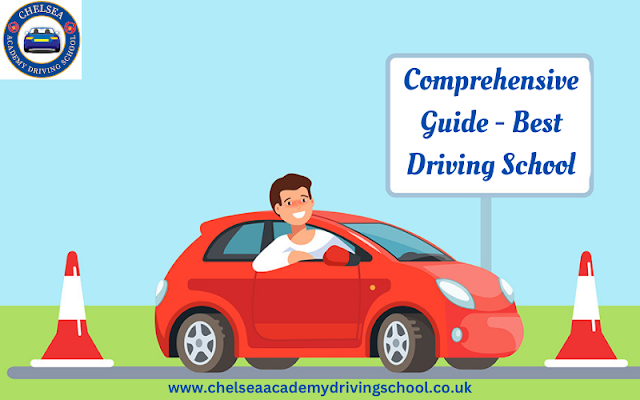Understanding the Driving Theory Test: How It Works and How to Prepare
It’s the fun time of learning how to drive in the UK. But before you book your practical test you must pass the driving theory test. Many learners do not take this process seriously enough. It’s not something to be memorized in signs or questions; it’s about truly understanding how to safely make choices out on the road.
If you’re in the process of preparing for your test and in the market for
a driving school in Fulham or
surrounding areas, understanding how the theory test operates is a good place
to start.
What is the Driving Theory Test?
The driving theory test tests what
you’ve learned about road safety, traffic signs, and driving. It ensures that
all learners study the Highway Code prior to the practical test.
It’s carried out by the Driver and Vehicle Standards Agency (DVSA) and is done
at an approved test center on a computer. There are two sections:
1.
Multiple-Choice Questions
2.
Hazard Perception Test
You will need to pass both sections to pass.
Section 1: The Questions with Choices
It includes 50 questions which relate to each other
mutually broad themes like:
·
Signs and road markings
·
Automobile security and maintenance
·
Rules of the road
·
Affect and arousal
·
At-risk road users and safety buffers
To pass successfully, you should score at least 43 out
of 50.
These questions are drawn from the Highway Code, Know Your Traffic Signs, and
Driving — The Essential Skills.
Beneficial Hint:
Practice with legitimate DVSA practice apps or test papers online in order to
get used to the format. Practicing with reputable materials ensures you learn
the right thing.
Part 2: The Hazard Perception Test
After you finish the multiple-choice section you go on
to the hazard perception test.
It assesses how you can spot developing hazards in the road.
You will watch 14 video extracts, which take about one
minute each. In each extract you must click when you observe a hazard just
starting to occur (something which could cause you to do something in response,
like slowing down or turning).
It contains 15 hazards which may be scored; the maximum
score is 75 points. You should score at least 44 points in order to pass.
Tips for Success:
Don’t click wildly — you won’t score any points if the machine thinks you’ve
clicked too much. Click once or twice when you clearly see the problem.
How to Prepare for the Theory Test
Getting ready the right way is important to pass on your
first try. Here’s a simple guide to help you prepare:
1.
Learn the Highway Code.
This is your base. Every question comes from the Highway Code, so take your
time to learn about road signs, speed limits, and how to behave while driving.
2.
Take practice tests often.
Practice tests on the Internet replicate the actual test patterns and identify
weak spots. Practice until you consistently attain marks higher than the pass
score.
3.
Watch the Hazard Perception
Videos.
There are official DVSA clips available online. Practice identifying hazards
early — timing is everything.
4.
Learn in Real Situations.
If you attend lessons at driving school in Fulham, ask your
instructor to give you examples of rules you learn in real-life situations.
This aids you in relating what you learn with practical driving exposure.
5.
Time Manage on Test Day.
Arrive early, stay calm, and read every question carefully. Take your time —
better slower and precise than fast.
Common Mistakes to Avoid
·
Recalling rather than
understanding concepts
Questions might be worded differently during the actual test.
·
Discounting the hazard
perception training
Most students fail in this section because they underestimate it.
·
Leaving preparations until the
last minute
Begin to study at least two to three weeks in advance.
·
Not reading the whole question
Some questions may be more than singly correct — select all that apply.
Once You’ve Completed the Theory Test
Once you pass both sections, your certificate is valid
for two years. During this period you must pass your practical driving test —
otherwise you’ll be required to retake the theory test.
So it’s worth booking driving lessons in or near Fulham fairly
soon after you pass your theory test. It helps keep the knowledge fresh and
easier to learn practically.
You shouldn’t think of passing the theory test as simply
a goal to tick off your list — it is the first step towards becoming a safe and
confident driver and the test format is well designed to make this happen. It
is well worth investing time studying with good structure. The test will not
only help you achieve a higher pass rate but also give you the essential
foundations upon which to build towards safe driving on the road.
Whether you study with a driving school in
Fulham or privately, always keep in mind that knowledge and awareness
at the wheel are your strongest assets.


.jpg)

Comments
Post a Comment